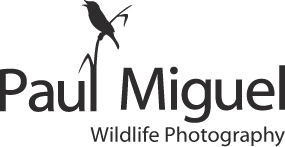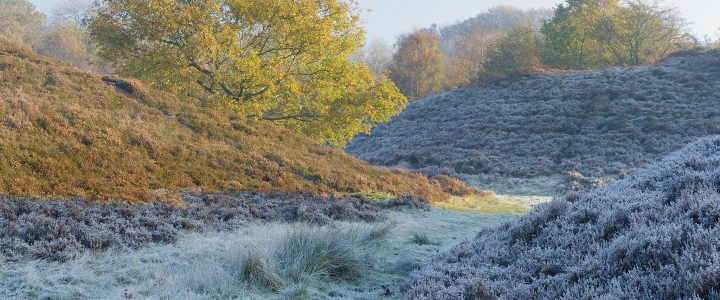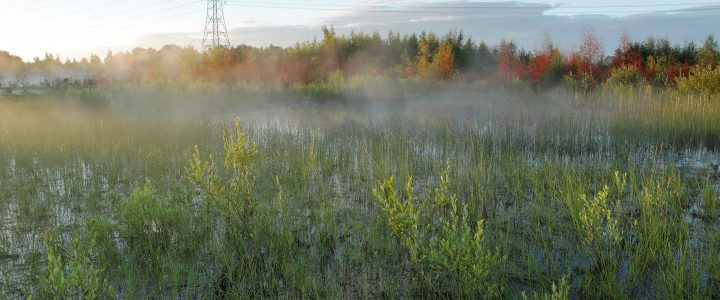I spend a lot of time watching the weather – and when temperatures are set to dip below zero I’m ready to get out with the camera. True winter weather is one of the joys of landscape photography – unfortunately it’s something that’s been sadly lacking in the U.K. for the past few years. On this particular morning, temperatures were forecast to reach -4 degrees in rural areas. Combined with low winds, the conditions were looking good and I was up early to visit a local site close to Leeds, West Yorkshire.

I arrived to glorious conditions – thick frost… everywhere! In these situations the biggest difficulty is often choosing what to photograph. Rather than begin to shoot straight away, I took a stroll around the area, noting the best compositions and trying to decide where the light would hit first. Big undulations in the land meant that certain areas wouldn’t get any sun for quite some time. There were a few good options but I started with a simple composition of the frosted heather and Birch trees, using my 50mm lens. Here I wanted everything sharp so I used f/14 to ensure good depth of field.

What I really liked about the image, apart from the frost, was the slight mist in the air, helping to add a little more atmosphere. I tried the image with a polarising filter and whilst it enhanced colour and contrast – it seemed to take away from the atmosphere. I actually preferred the shot without the filter – and with a little overexposure in post-processing.
Very quickly the sun was up and beginning to cast strong light onto higher ground. Lower down the frost still stay thick, having not received any sunlight. This led to a really interesting scene with a mixture of light and shade. While the sun was strongly illuminating an Oak tree and surrounding heather, the foreground remained in shadow. Often in strong light the shadow areas can be too dark but here the frost was making a huge difference in brightening things up. I took a number of images trying both landscape and portrait compositions. A polariser improved this image when rotated fully.


Drawn by the strong colour and contrast I moved in closer and shot the Oak tree and heather, this time using my wide angle 24mm lens, again with a polarising filter. By this point the frost was beginning to melt – often the case here in the U.K where such opportunities can be fleeting.

Often it’s so tempting to photograph the wider views but the smaller details can sometimes provide better images. Whilst shooting a wide landscape I kept looking at the frosty Oak nearby. Many of the leaves were still frosted and they showed up well against the shaded background. I switched to my 100mm lens and began to investigate compositions. The light was beautiful. Shooting almost into the sun, the colourful leaves were perfectly lit whilst the shaded background added more winter atmosphere to the image. For this exposure I used an aperture of f5.6. This was definitely my favourite shot so far!

This was my first frosty photography session of the season and the conditions could barely have been better. With the sun getting higher I decided the best images had been taken and I set off for home, albeit taking a brief detour to capture these birch trees in semi-shade against autumn colour.

All images were taken with a Canon 1DX mark i using Canon 24mm, 50mm and 100mm lens and Induro tripod. If you’d like to learn the skills involved in capturing landscape images like these then why not book a One to One Nature Photography Workshop To see more of my landscape photography check out the Photo Galleries on my website.





